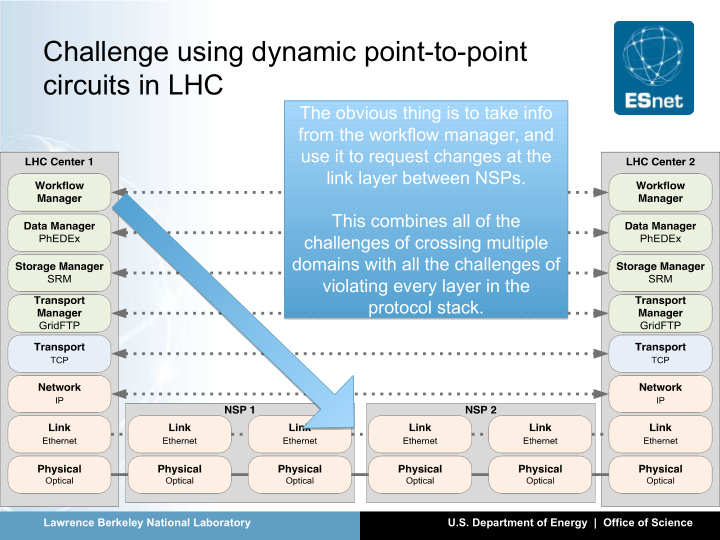



Challenge using dynamic point-to-point circuits in LHC The obvious thing is to take info The obvious thing is to take info from the workflow manager, and from the workflow manager, and use it to request changes at the use it to request changes at the link layer between NSPs. link layer between NSPs. This combines all of the This combines all of the challenges of crossing multiple challenges of crossing multiple domains with all the challenges of domains with all the challenges of violating every layer in the violating every layer in the protocol stack. protocol stack. Lawrence Berkeley National Laboratory U.S. Department of Energy | Office of Science
Idea for a possible way forward • The ANA-100G LHCONE integration experiment is doing some interesting work: • Turning up and down bandwidth between LHCONE instances • Adjusting routing between LHCONE instances • Developing measurement philosophy and plans for measuring impact on LHC end users • Could we build on this work, and try to figure out how to use dynamic circuits to provision ‘found’ or temporarily available resources into the LHCONE VRF? Lawrence Berkeley National Laboratory U.S. Department of Energy | Office of Science
Advantages • Breaks the requirement for coordinated lock-step planning and development between the NSP and LHC software development groups. • The NSP circuit development teams already contain, or have easy access to the right ‘application level’ experts (BGP routing). • Constrains the scope of the work to the NSP’s who are involved in developing and deploying dynamic circuits. • Could establish a framework for NSPs, and other entities to easily contribute network resources to the LHC community. Lawrence Berkeley National Laboratory U.S. Department of Energy | Office of Science
Recommend
More recommend